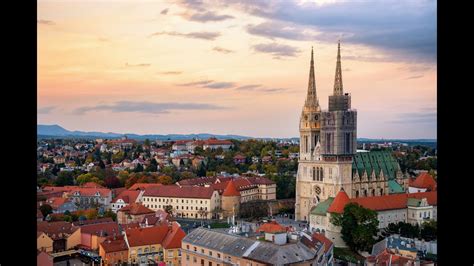
Croatia's Economic Surge: Growth Amid Challenges
Croatia Leads EU Economic Growth Amid Rising Pressures
Croatia is emerging as a standout performer in the European Union's economic landscape, with the European Commission's latest autumn forecast highlighting the nation among the bloc's fastest-growing economies. While solid GDP projections paint an optimistic picture, persistent inflation and labor shortages present significant hurdles to sustainable development.
Strong GDP Growth Outpaces European Averages
The European Commission projects Croatia's GDP will expand by a robust 3.2% in 2025, moderating to 2.9% in 2026. This performance significantly outpaces the EU's average growth rate of 1.4% for 2025 and the eurozone's 1.3% projection. Only Ireland, Malta, and Cyprus are expected to achieve stronger growth rates within the union.
"Strong household consumption driven by rising real incomes continues to fuel growth, while employment remains on an upward path," according to the Commission's report. This domestic demand, combined with Croatia's strategic positioning in the Adriatic, has created a resilient economic foundation.

Labor Market: Record Low Unemployment Meets Critical Shortages
Croatia's employment landscape presents a paradox of success and challenge. The Commission forecasts unemployment will plummet to 4.7% in 2025 and further decline to 4.5% in 2026—among the lowest rates in the EU. For context, the EU average stands at 5.9%, with Spain at 10.4% and the Czech Republic leading at just 2%.
However, this tight labor market is creating "increasingly pressing concerns" about workforce shortages. Despite continued recruitment from outside the EU, the Commission warns Croatia will struggle to meet labor demands, potentially constraining future growth potential.
Inflation Remains Persistent Headwind
Despite positive growth indicators, inflation remains Croatia's most stubborn economic challenge. Prices are forecast to rise by 4.3% this year before easing to 2.8% in 2026—still notably above EU averages. Only Romania, Estonia, and Hungary currently experience higher inflation rates in the union.
The real estate sector exacerbates these pressures, with property prices continuing to climb at double-digit rates. "Stronger-than-expected wage growth could further elevate price pressures and erode Croatia's export competitiveness," the Commission cautions, highlighting a potential vicious cycle of wage-price spirals.

Public Debt Shows Favorable Trajectory
In contrast to many EU peers, Croatia is making progress on its fiscal consolidation. Public debt is projected to fall to 56.2% of GDP this year and further decline to 52.1% in 2026. This downward trend contrasts sharply with Italy's rising debt burden and Greece's still-elevated debt levels, demonstrating Croatia's commitment to fiscal responsibility.
Outlook: Opportunities Amid Global Uncertainties
While Brussels describes EU-wide growth as "solid," global uncertainty and rising protectionism remain key risks. For Croatia specifically, the latest projections mirror spring forecasts with upward revisions to inflation expectations.
The nation's economic momentum offers promising opportunities, particularly in tourism, maritime industries, and technology sectors. However, addressing structural challenges—particularly labor market constraints and inflation management—will be crucial for translating strong growth into long-term prosperity.
"Croatia's economic performance demonstrates resilience, but managing inflationary pressures and workforce shortages will be critical for sustaining its growth trajectory."
As Croatia navigates these complexities, its economic journey offers valuable insights into the balance between rapid growth and sustainable development in the modern European economy.
Share this article
Michael Chen
Business and finance reporter specializing in market analysis, startups, and economic trends. MBA from Harvard Business School.